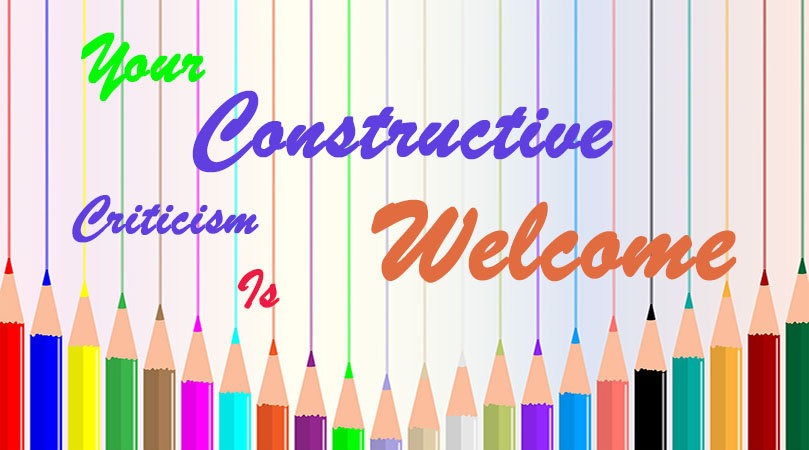“There is no such thing as good writing, only good rewriting. ”
— Robert Graves
Like a pilot preparing for takeoff, the person conducting a critique reads the submitted material and “runs a checklist.” Except for grammar, spelling and word choice, the critiquer should not make definitive recommendations to avoid polluting the original writer’s creativity. The rewrite is always up to the author.
There are a number of different items in which a writer may request a critique, a few listed below:
- TITLE – descriptive, simple language, a little mystery and appropriate for genre.
- SYNOPSIS – about 1000 words, identify protagonist, story problem or conflict, setting, major plot turns, absolutely necessary characters, resolved conflicts and it should makes sense to a reader.
- BLURBS – 150 – 200 words, introduce main character, set stage for conflict, make stakes clear, state why the book is desirable for a reader.
- OUTLINE – excellent place to start for a critique. It’s easier for a writer to be on the right track from the start. Encourage three acts and typical plot points.
- STORY PIECE – up to 3000 words of a short story or novel. Having regular critiquers is helpful to understand the progress of the story, monitor the protagonist’s journey and make suggestions as needed.
Below is a very condensed version of elements to consider in a critique. The list is not exhaustive but by thinking about these issues, even a novice critiquer can do a good job. Communicate problems, lack of clarity or story ideas as suggestions. It’s worth mentioning things the writer did well.
- HERO’S JOURNEY — backstory, stability, a calling, passes a threshold, has a helper, temptations and challenges, revelation, transformation, atonement and return to stability.
- LEAD CHARACTERS – “round” fully described both physically and emotionally plus have definite goals and motivations. They should be recognizable by a snippet of dialogue. Keep the number less than five in a novel, even fewer for a short story.
- MINOR CHARACTERS – “flat” minimally described, often disposable.
- STORY WORLD – deviations from “normal world” are explained BEFORE (or as soon as) characters encounter a difference. The story world should be fully defined by the midpoint of the story.
- NUANCE – story needs authenticity, complexity, deviation from expected (e.g. not another Star Trek) and meaning.
- CLARITY – story is logical and clear.
- GRAMMAR & MECHANICS – common problems: quotation marks, number and time representation, too many adverbs (telling), pronouns not connecting to a specific character and inappropriate vocabulary level.
- LEADS – start of scenes and chapters draw the reader in and also make the setting clear.
- HOOKS – except for the epilogue, the ending of a scene or chapter should NOT tie up all loose ends. i.e. things are bad AND… or things are good BUT… Thus, the reader needs to continue reading.
- MEANING – the story should have a theme. e.g. judgement, survival, peace and war, love, heroism, good and evil, circle of life, suffering, deception, coming of age etc.
- VERB TENSE – stick to simple present, past and future. Severely minimize perfect, conditional and continuous tenses.
- POINT OF VIEW (POV) – avoid omniscient POV, use only one POV per scene, don’t head-hop. Pay attention to the viewpoint (perspective) character – if they can’t see or hear something it should not be in the scene.
- PASSIVE VOICE – avoid it, unless a character is timid, trying to avoid blame or is being diplomatic.
- SHOW DON’T TELL – As Anton Chekhov said, “Don’t tell me the moon is shining; show me the glint of light on broken glass.”
- CONFLICT – [no conflict = no story]. Insert internal conflict, interpersonal conflict, environmental conflict and thematic conflict.
- USE ALL THE TOOLS – interior monologue, dialogue, description, exposition and action.
- REPETITION – Don’t repeat words. Especially, names and pronouns.
- VARY SENTENCES – change length and construction. Use short sentences during action.
- CUT THE UNNECESSARY – If a section does not move the story forward, cut it. Avoid over-telling (the reader is not a dummy). Don’t use cliches.
- WHAT TO ADD – description of the setting, thoughts, emotions, smell, taste, feel, sounds and color.
Some submissions to critique are “clean” and don’t receive many suggestions. However, submissions receiving many suggestions need substantial revision and the author should be encouraged to submit the work again. However, if the author prefers not to make changes, it’s best not to resubmit.
Keep in mind that publishers prefer to reject a manuscript than to request revisions.

R. C. Beckett was given a collection of Fantasy and Science Fiction Magazines as a teenager and read hundreds of the stories — he was hooked and started writing fiction in 2013. He loves to write hard science fiction, but can’t help adding a bit of humor. Publications: “Exit Mars” and “Exit Earth” (available on Amazon). “Exit Pluto”, the third in the Exit series, should be published in late 2020. He lives in Golden Colorado and is a member of Rocky Mountain Fiction Writers. Walking his dog is key to his writing since that’s when he imagines plots for his stories. He also volunteers as a webmaster for non-profit companies including SpecFicWriters.

